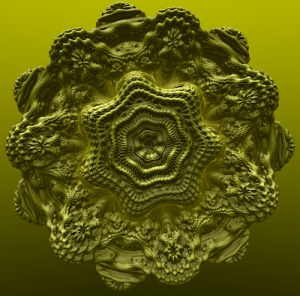 Since my time in the early 90s at Santa Fe Institute, I’ve been fascinated by the informational physics of complex systems. What are the requirements of an abstract system that is capable of complex behavior? How do our intuitions about complex behavior or form match up with mathematical approaches to describing complexity? For instance, we might consider a snowflake complex, but it is also regular in it’s structure, driven by an interaction between crystal growth and the surrounding air. The classic examples of coastlines and fractal self-symmetry also seem complex but are not capable of complex behavior.
Since my time in the early 90s at Santa Fe Institute, I’ve been fascinated by the informational physics of complex systems. What are the requirements of an abstract system that is capable of complex behavior? How do our intuitions about complex behavior or form match up with mathematical approaches to describing complexity? For instance, we might consider a snowflake complex, but it is also regular in it’s structure, driven by an interaction between crystal growth and the surrounding air. The classic examples of coastlines and fractal self-symmetry also seem complex but are not capable of complex behavior.
So what is a good way of thinking about complexity? There is actually a good range of ideas about how to characterize complexity. Seth Lloyd rounds up many of them, here. The intuition that drives many of them is that complexity seems to be associated with distributions of relationships and objects that are somehow juxtapositioned between a single state and a uniformly random set of states. Complex things, be they living organisms or computers running algorithms, should exist in a Goldilocks zone when each part is examined and those parts are somehow summed up to a single measure.
We can easily construct a complexity measure that captures some of these intuitions. Let’s look at three strings of characters:
x = aaaaaaaaaaaaaaaaaaaaaaaaaaaaaaaaaaaaaa
y = menlqphsfyjubaoitwzrvcgxdkbwohqyxplerz
z = the fox met the hare and the fox saw the hare
Now we would likely all agree that y and z are more complex than x, and I suspect most would agree that y looks like gibberish compared with z. Of course, y could be a sequence of weirdly coded measurements or something, or encrypted such that the message appears random. Let’s ignore those possibilities for our initial attempt at defining a complexity measure. We can see right away that an approach using basic information theory doesn’t help much. Algorithmic informational complexity will be highest for y, as will entropy:
![]()
for each sequence composed out of an alphabet with counts, s. So we get: H(x) = 0, H(y) = 3.199809, and H(z) = 2.3281. Here’s some sample R code using the “entropy” package if you want to calculate yourself:
> z = "the fox met the hare and the fox saw the hare" > zt = table(strsplit(z, '')[[1]]) > entropy(zt, method="ML")
Note that the alphabet of each string is slightly different, but the missing characters between them don’t matter since their probabilities are 0.
We can just arbitrarily scale entropy by the maximum entropy possible for the same length string like this:
![]()
![]()
This is somewhat like channel efficiency in communications theory, I think. And then just turn this into a parabolically-scaled measure that centers at 0.5:
![]()
where ![]() is an arbitrary non-zero scaling parameter.
is an arbitrary non-zero scaling parameter.
But this calculation is only considering the individual character frequencies, not the composition of the characters into groupings. So we can consider pairs of characters in this same calculation, or triples, etc. And also, just looking at these n-gram sequences doesn’t capture potentially longer range repetitious structures. So we can gradually ladle on grammars as the counting mechanism. Now, if our measure of complexity is really going to capture what we intuitively consider to be complex, all of these different levels of connections within the string or other organized piece of information must be present.
This general program is present in every one of Seth Lloyd’s complexity metrics in various ways and even comes into play in discussions of consciousness, though many use mutual information rather than entropy per se. Here’s Max Tegmark using a variation on Giulio Tinoni’s Phi concept from Integrated Information Theory to demonstrate that integration is a key component of consciousness and how that might be calculated for general physical systems.
A couple of fixes to grammar and equations.